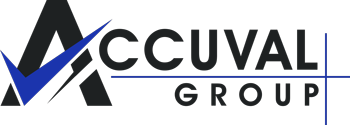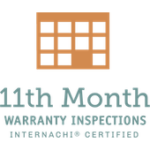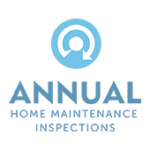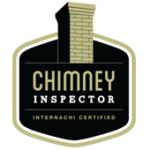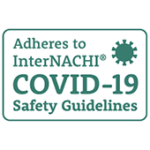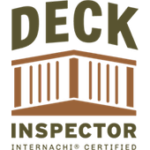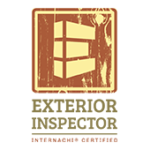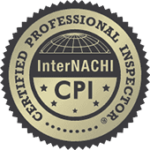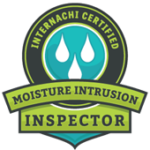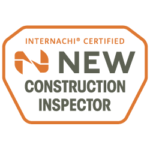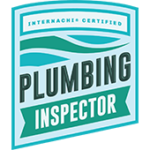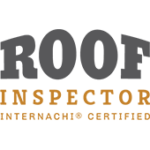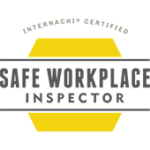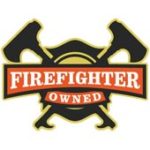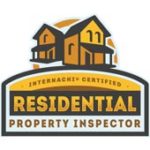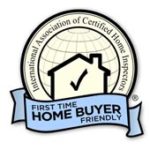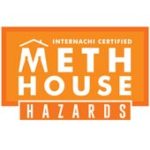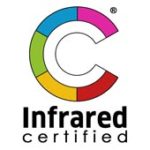We are licensed in Illinois & Indiana. Please view the proper Standards Of Practice below.
Illinois – Standards of Practice
TITLE 68: PROFESSIONS AND OCCUPATIONS
CHAPTER VIII: DEPARTMENT OF FINANCIAL AND PROFESSIONAL REGULATION
PART 1410 HOME INSPECTOR LICENSE ACT
SECTION 1410.200 STANDARDS OF PRACTICE
Section 1410.200 Standards of Practice
a) The following are terms commonly used in the writing of home inspection reports.
1) Alarm Systems: Warning devices, installed or free-standing, including but not limited to: carbon monoxide detectors, flue gas and other spillage detectors, security equipment, ejector pumps and smoke alarms.
2) Automatic Safety Controls: Devices designed and installed to protect systems and components from unsafe conditions.
3) Client: A person or person who engages or seeks to engage the services of a home inspector for an inspection assignment.
4) Component: A part of a system.
5) Decorative: Ornamental; not required for the operation of the essential systems and components of a home.
6) Describe: To report a system or component by its type or other observed, significant characteristics to distinguish it from other systems or components.
7) Dismantle: To take apart or remove any component, device or piece of equipment that would not be taken apart or removed by a homeowner in the course of normal and routine home owner maintenance.
8) Further Evaluation: Examination and analysis by a qualified professional, tradesperson or service technician beyond that provided by the home inspection.
9) Home Inspection: As defined in Section 1-10 of the Act.
10) Home Inspection Report: A written evaluation prepared and issued by a home inspector, upon completion of a home inspection, that meets the standards of practice established by this Subpart.
11) Household Appliances: Kitchen, laundry and similar appliances, whether installed or free-standing.
12) Inspect: To visually examine readily accessible systems and components of a building in accordance with this Subpart, using normal operating controls and opening readily accessible access panels.
13) Installed: Attached in such a manner that removal requires tools.
14) Normal Operating Controls: Devices such as, but not limited to, thermostats, switches or faucets intended to be operated by the homeowner.
15) Readily Accessible: Available for visual inspection without requiring moving of personal property, dismantling, destructive measures, or any action that will likely involve risk to persons or property.
16) Readily Operable Access Panel: A panel provided for homeowner inspection and maintenance that is within normal reach, can be removed by one person, and is not sealed in place.
17) Recreational Facilities: Spas, saunas, steam baths, swimming pools, and exercise, entertainment, athletic, playground or other similar equipment and associated accessories.
18) Report: To communicate in writing.
19) Representative Number: One component per room for multiple similar interior components, such as windows, doors and electric outlets, and one component on each side of the building for multiple similar exterior components.
20) Roof Drainage Systems: Components used to carry water off a roof and away from a building.
21) Significantly Deficient: Unsafe or not functioning.
22) Shut Down: A state in which a system or component cannot be operated by normal controls.
23) Solid Fuel Burning Appliances: A hearth and fire chamber or similar prepared place in which a fire may be built and that is built in conjunction with a chimney; or a listed assembly of a fire chamber, its chimney and related factory-made parts designed for unit assembly without requiring field construction.
24) Structural Component: A component that supports non-variable forces or weights (dead loads) and variable forces or weights (live loads).
25) System: A combination of interacting or interdependent components, assembled to carry out one or more functions.
26) Technically Exhaustive Inspection: An investigation that involves dismantling or the extensive use of advance techniques, measurements, instruments, testing, calculations or other means.
27) Under-floor Crawl Space: The area within the confines of the foundation and between the ground and the underside of the floor.
28) Unsafe: A condition in a system or component that poses a significant risk of personal injury or property damage during normal, day-to-day use. The risk may be due to damage, deterioration, improper installation or a change in accepted residential construction standards.
29) Wiring Methods: Includes identification of electrical conductors or wires such as, but not limited to, non-metallic sheathed cable (Romex), armored cable (BX) or knob and tube.
b) This Subpart defines the practice of home inspection in the State of Illinois and:
1) Provides home inspection guidelines; and
2) Defines certain terms relating to home inspections.
c) The purpose of this Subpart is to establish a minimum and uniform standard for licensed home inspectors to provide the client with information regarding the condition of the systems and components of the home as inspected at the time of the home inspection. The home inspectors shall observe readily visible and accessible installed systems and components listed as part of a home inspection, unless the system or component is limited and/or excluded under the signed written agreement with the client.
d) Home inspectors or home inspector entities shall enter into a written agreement with the client or duly authorized representative prior to the home inspection that includes at a minimum:
1) The purpose of the inspection;
2) The date of the inspection;
3) The name, address and license numbers of the home inspector and home inspector entity;
4) The fee for services performed;
5) A statement that the inspection will be performed in accordance with these Standards;
6) A list of the systems and components to be inspected;
7) Limitations or exclusions of systems or components being inspected; and
8) The signature of the client or his or her duly authorized representative, and the signature of the home inspector or the duly authorized representative of a home inspector entity.
e) At the conclusion of the home inspection, a home inspector shall submit a written report, which can be in electronic format (including electronic signature), to the client or duly authorized representative within 2 business days (Monday through Friday, excluding legal holidays) that includes the home inspector’s signature and license number and license expiration date and shall:
1) Describe the systems and components that were inspected;
2) Report on those systems and components inspected that, in the opinion of the inspector, are significantly deficient including:
A) A reason why, if not self evident, the system or component is significantly deficient.
B) Whether the reported deficiency should be corrected or monitored.
C) Disclosure of any systems or components designated for inspection that were present at the time of the home inspection but were not inspected with a reason why they were not inspected.
f) These Standards are not intended to limit home inspectors from:
1) Including other inspection services, systems or components in addition to those defined in these Standards;
2) Specifying repairs, provided the inspector is appropriately qualified and willing to do so; and
3) Excluding systems and components from the inspection if the exclusion is specified in the written agreement.
g) When, pursuant to written agreement with a client, the structural system/ foundation is inspected, the home inspector shall:
1) Inspect the structural components, including the foundation and framing;
2) Describe the foundation and report the methods used to inspect the under-floor crawl space or basement area, floor, wall, ceiling, roof and structures and report the methods used to inspect the attic; and
3) Report visible signs of water and moisture penetration into the building or signs of condensation on building components.
h) When, pursuant to the written agreement with a client, the exterior is inspected, the home inspector shall:
1) Inspect the exterior wall covering; flashing and trim; all exterior doors; attached decks, balconies, stoops, steps, porches and their associated railings; the eaves, soffits and fascias if accessible from the ground level; the vegetation, grading, surface drainage and retaining walls on the property when any of these are likely to adversely affect the building; walkways; patios; and driveways leading to dwelling entrances; and
2) Describe the exterior wall covering.
i) When, pursuant to the written agreement with a client, the roof system is inspected, the home inspector shall:
1) Inspect the roof covering, roof drainage systems, flashings, skylights, chimneys, and roof penetrations; and
2) Describe the roof covering and report the methods used to inspect the roof.
j) When, pursuant to the written agreement with a client, the plumbing system is observed, the home inspector shall describe in detail the interior water supply and distribution systems, including fixtures and faucets, drains, waste and vent systems; water heating equipment and vent systems; flues and chimneys; fuel storage and fuel distribution systems; drainage sumps, sump pumps and related piping; and location of main water and main fuel shut-off valves.
k) When, pursuant to the written agreement with a client, the electrical system is inspected, the home inspector shall:
1) Inspect the service drop; service entrance conductors, cables and raceways; service equipment and main disconnects; service grounding; interior components of service panels and subpanels; conductors; overcurrent protection devices; a representative number of installed lighting fixtures, switches and receptacles; and ground fault circuit interrupters;
2) Describe the amperage and voltage rating of the service, the location of main disconnects and subpanels and the wiring methods; and
3) Report on the presence of solid conductor aluminum branch circuit wiring and on the absence of carbon monoxide and smoke detectors.
l) When, pursuant to the written agreement with a client, the heating system is inspected, the home inspector shall:
1) Inspect the permanently installed heating equipment, including fans, pumps, ducts and piping; their supports, registers, radiators and convectors; and visible vent systems, flues and chimneys; and
2) Describe the energy source and the heating method by their distinguishing characteristics.
m) When, pursuant to the written agreement with a client, the cooling system is inspected, the home inspector shall:
1) inspect the permanently installed central and through-wall cooling equipment; and
2) describe the energy source and the cooling method by their distinguishing characteristics.
n) When, pursuant to the written agreement with a client, the interior is inspected, the home inspector shall:
1) Inspect the walls, ceilings and floors; steps, stairways, balconies and their railings; countertops, installed cabinets, doors and windows; and garage doors and garage door operators; and
2) Report visible signs of water and moisture penetration into the building or signs of condensation on building components.
o) When, pursuant to the written agreement with a client, the insulation and ventilation are inspected, the home inspector shall:
1) inspect the insulation and vapor retarders in unfinished spaces, the ventilation of attics and foundation areas, and the mechanical ventilation systems in attics, kitchens, bathrooms and laundry; and
2) describe the insulation and vapor retarders in unfinished spaces and the absence of insulation in unfinished spaces at conditioned surfaces.
p) When, pursuant to the written agreement with a client, the fireplaces and solid fuel burning appliances are inspected, the home inspector shall:
1) Inspect the system components, vent systems, flues and chimneys; and
2) Describe the fireplaces, solid fuel burning appliances, and chimneys.
(Source: Amended at 34 Ill. Reg. 8063, effective June 3, 2010)
Indiana Standards Of Practice
Current through July 28, 2021
Section 878 IAC 1-2-1 – Minimum standards of competent performance of home inspections
Authority: IC 25-20.2-3-8; IC 25-20.2-3-9
Affected: IC 25-20.2-2-7
Sec. 1.
(a) The competent performance of home inspections requires remaining current with generally accepted developments within the area of specialization and the development and exercise of judgment as to when to apply specific procedures in a reasonable, effective, efficient, and economical manner.
(b) The competent performance of home inspections includes acting within generally accepted ethical principles and guidelines of the profession and maintaining an awareness of personal and professional limitations.
(c) Purpose and scope are as follows:
(1) Licensees shall:
(A) inspect:
(i) readily accessible systems and components of homes listed in these minimum standards of competent performance; and
(ii) installed systems and components of homes listed in these minimum standards of competent performance; and
(B) report in writing, as required by IC 25-20.2-2-7:
(i) on those systems and components inspected that, in the professional opinion of the inspector, are significantly deficient or are near the end of their service lives;
(ii) a reason why, if not self-evident, the system or component is significantly deficient or near the end of its service life;
(iii) the licensee’s recommendations to correct or monitor the reported deficiency; and
(iv) on any systems and components designated for inspection in these minimum standards of competent performance that were present at the time of the home inspection but were not inspected and a reason they were not inspected; and
(C) identify on the written report:
(i) licensee’s name;
(ii) licensee’s Indiana license number;
(iii) address of inspected residential dwelling;
(iv) name of client for whom the inspection is being prepared; and
(v) date of inspection.
(2) These minimum standards of competent performance are not intended to limit licensees from:
(A) including other inspection services, systems, or components in addition to those required by these minimum standards of competent performance;
(B) specifying repairs, provided the licensee is appropriately qualified and willing to do so; or
(C) excluding systems and components from the inspection if requested by the client.
(d) Structural systems requirements are as follows:
(1) Licensees shall:
(A) inspect:
(i) the structural components including foundation and framing; and
(ii) by probing a representative number of structural components where deterioration is suspected or where clear indications of possible deterioration exist, but probing is not required when probing would damage any finished surface or where no deterioration is visible; and
(B) describe:
(i) the foundation and report the methods used to inspect the underfloor crawlspace;
(ii) the floor structure;
(iii) the wall structure;
(iv) the ceiling structure; and
(v) the roof structure and report the methods used to inspect the attic.
(2) Licensees are not required to:
(A) provide any engineering service or architectural service; or
(B) offer an opinion as to the adequacy of any structural system or component.
(e) Exteriors requirements are as follows:
(1) Licensees shall:
(A) inspect:
(i) the exterior wall covering, flashing, and trim;
(ii) all exterior doors;
(iii) attached decks, balconies, stoops, steps, porches, and their associated railings;
(iv) the eaves, soffits, and fascias where accessible from the ground level;
(v) the vegetation, grading, surface drainage, and retaining walls on the property when any of these are likely to adversely affect the building; and
(vi) walkways, patios, and driveways leading to dwelling entrances; and
(B) describe the exterior wall covering.
(2) Licensees are not required to inspect:
(A) screening, shutters, awnings, and similar seasonal accessories;
(B) fences;
(C) geological, geotechnical, or hydrological conditions;
(D) recreational facilities;
(E) outbuildings;
(F) seawalls, breakwalls, and docks; or
(G) erosion control and earth stabilization measures.
(f) Roof systems requirements are as follows:
(1) Licensees shall:
(A) inspect:
(i) the roof covering;
(ii) the roof drainage systems;
(iii) the flashings; and
(iv) the skylights, chimneys, and roof penetrations; and
(B) describe the roof covering and report the methods used to inspect the roof.
(2) Licensees are not required to inspect:
(A) antennae;
(B) interiors of flues or chimneys that are not readily accessible; or
(C) other installed accessories.
(g) Plumbing systems requirements are as follows:
(1) Licensees shall:
(A) inspect:
(i) the interior water supply and distribution systems including all fixtures and faucets;
(ii) the drain, waste, and vent systems including all fixtures;
(iii) the water heating equipment;
(iv) the vent systems, flues, and chimneys;
(v) the fuel storage and fuel distribution systems; and
(vi) the drainage sumps, sump pumps, and related piping; and
(B) describe:
(i) the water supply, drain, waste, and vent piping materials;
(ii) the water heating equipment including the energy source; and
(iii) the location of main water and main fuel shut-off valves.
(2) Licensees are not required to:
(A) inspect:
(i) the clothes washing machine connections;
(ii) the interiors of flues or chimneys that are not readily accessible;
(iii) wells, well pumps, or water storage related equipment;
(iv) water conditioning systems;
(v) solar water heating systems;
(vi) fire and lawn sprinkler systems; or
(vii) private waste disposal systems;
(B) determine:
(i) whether water supply and waste disposal systems are public or private; or
(ii) the quantity or quality of the water supply; or
(C) operate safety valves or shut-off valves.
(h) Electrical systems requirements are as follows:
(1) Licensees shall:
(A) inspect:
(i) the service drop;
(ii) the service entrance conductors, cables, and raceways;
(iii) the service equipment and main disconnects;
(iv) the service grounding;
(v) the interior components of service panels and subpanels;
(vi) the conductors;
(vii) the overcurrent protection devices;
(viii) a representative number of installed lighting fixtures, switches, and receptacles; and
(ix) the ground fault circuit interrupters;
(B) describe:
(i) the amperage and voltage rating of the service;
(ii) the location of main disconnect or disconnects and subpanels; and
(iii) the wiring methods; and
(C) report on the:
(i) presence of solid conductor aluminum branch circuit wiring; and
(ii) absence of smoke detectors.
(2) Licensees are not required to:
(A) inspect:
(i) the remote control devices unless the device is the only control device;
(ii) the alarm systems and components;
(iii) the low voltage wiring, systems, and components; or
(iv) the ancillary wiring, systems, and components not a part of the primary electrical power distribution system; or
(B) measure amperage, voltage, or impedance.
(i) Heating systems requirements are as follows:
(1) Licensees shall:
(A) inspect:
(i) the installed heating equipment; and
(ii) the vent systems, flues, and chimneys; and
(B) describe:
(i) the energy source; and
(ii) the heating method by its distinguishing characteristics.
(2) Licensees are not required to:
(A) inspect:
(i) the interiors of flues or chimneys that are not readily accessible;
(ii) the heat exchanger;
(iii) the humidifier or dehumidifier;
(iv) the electronic air filter; or
(v) the solar space heating system; or
(B) determine heat supply adequacy or distribution balance.
(j) Air conditioning systems requirements are as follows:
(1) Licensees shall:
(A) inspect the installed central and through-wall cooling equipment; and
(B) describe:
(i) the energy source; and
(ii) the cooling method by its distinguishing characteristics.
(2) Licensees are not required to:
(A) inspect electronic air filters; or
(B) determine cooling supply adequacy or distribution balance.
(k) Interiors requirements are as follows:
(1) Licensees shall inspect:
(A) the walls, ceilings, and floors;
(B) the steps, stairways, and railings;
(C) the countertops and a representative number of installed cabinets;
(D) a representative number of doors and windows; and
(E) garage doors and garage door operations.
(2) Licensees are not required to inspect:
(A) the paint, wallpaper, and other finish treatments;
(B) the carpeting;
(C) the window treatments;
(D) the central vacuum systems;
(E) the household appliances; or
(F) recreational facilities.
(l) Insulation and ventilation requirements are as follows:
(1) Licensees shall:
(A) inspect:
(i) the insulation and vapor retarders in unfinished spaces;
(ii) the ventilation of attics and foundation areas; and
(iii) the mechanical ventilation systems; and
(B) describe:
(i) the insulation and vapor retarders in unfinished spaces; and
(ii) the absence of insulation in unfinished spaces at conditioned surfaces.
(2) Licensees are not required to:
(A) disturb insulation or vapor retarders; or
(B) determine indoor air quality.
(m) Fireplaces and solid fuel burning appliances requirements are as follows:
(1) Licensees shall:
(A) inspect:
(i) the system components; and
(ii) the vent systems, flues, and chimneys; and
(B) describe:
(i) the fireplaces and solid fuel burning appliances; and
(ii) the chimneys.
(2) Licensees are not required to:
(A) inspect:
(i) the interiors of flues or chimneys;
(ii) the firescreens and doors;
(iii) the seals and gaskets;
(iv) the automatic fuel fee devices;
(v) the mantels and fireplace surrounds;
(vi) the combustion make-up air devices; or
(vii) the heat distribution assists whether gravity controlled or fan assisted;
(B) ignite or extinguish fires;
(C) determine draft characteristics; or
(D) move fireplace inserts or stoves or firebox content.
(n) General limitations are as follows:
(1) Inspections performed in accordance with these minimum standards of competent performance:
(A) are not technically exhaustive; and
(B) will not identify concealed conditions or latent defects.
(2) These minimum standards of competent performance are applicable to buildings with five (5) or fewer dwelling units and their garages or carports.
(o) General exclusions are as follows:
(1) Licensees are not required to perform any action or make any determination unless specifically stated in these minimum standards of competent performance, except as may be required by lawful authority.
(2) Licensees are not required to determine any of the following:
(A) The conditions of systems and components that are not readily accessible.
(B) The remaining life of any system or component.
(C) The strength, adequacy, effectiveness, or efficiency of any system or component.
(D) The causes of any condition or deficiency.
(E) The methods, materials, or costs of corrections.
(F) Future conditions including, but not limited to, failure of systems and components.
(G) The suitability of the property for any specialized use.
(H) Compliance with regulatory requirements, such as codes, regulations, laws, or ordinances.
(I) The market value of the property or its marketability.
(J) The advisability of the purchase of the property.
(K) The presence of potentially hazardous plants or animals including, but not limited to, wood-destroying organisms or diseases harmful to humans.
(L) The presence of any environmental hazards including, but not limited to, toxins, carcinogens, noise, and contaminants in soil, water, and air.
(M) The effectiveness of any system installed or methods utilized to control or remove suspected hazardous substances.
(N) The acoustical properties of any system or component.
(3) Licensees are not required to:
(A) offer or perform:
(i) any act or service contrary to law;
(ii) engineering services; or
(iii) work in any trade or any professional service other than home inspection; or
(B) offer warranties or guarantees of any kind.
(4) Licensees are not required to operate:
(A) any system or component that:
(i) is shut down or otherwise inoperable; or
(ii) does not respond to normal operating controls; or
(B) shut-off valves.
(5) Licensees are not required to enter:
(A) any area that will, in the opinion of the licensee, likely be dangerous to the licensee or other persons or damage the property or its systems and components; or
(B) the underfloor crawlspaces or attics that are not readily accessible.
(6) Licensees are not required to inspect:
(A) underground items including, but not limited to, underground storage tanks or other underground indications of their presence, whether abandoned or active;
(B) systems or components that are not installed;
(C) decorative items;
(D) systems or components located in areas that are not entered in accordance with these minimum standards of competent performance;
(E) detached structures other than garages and carports; or
(F) common elements or common areas in multiunit housing, such as condominium properties or cooperative housing.
(7) Licensees are not required to:
(A) perform any procedure or operation that will, in the opinion of the licensee, likely be dangerous to the licensee or other persons or damage the property or its systems or components;
(B) move:
(i) suspended ceiling tiles;
(ii) personal property;
(iii) furniture;
(iv) equipment;
(v) plants;
(vi) soil;
(vii) snow;
(viii) ice; or
(ix) debris; or
(C) dismantle any system or component, except as explicitly required by these minimum standards of competent performance.
878 IAC 1-2-1
Home Inspectors Licensing Board; 878 IAC 1-2-1; filed Apr 18, 2005, 12:15 p.m.: 28 IR 2721; readopted filed Nov 22, 2011, 12:20 p.m.: 20111221-IR-878110371RFA
Readopted filed 12/1/2017, 1:54 p.m.: 20171227-IR-878170406RFA
